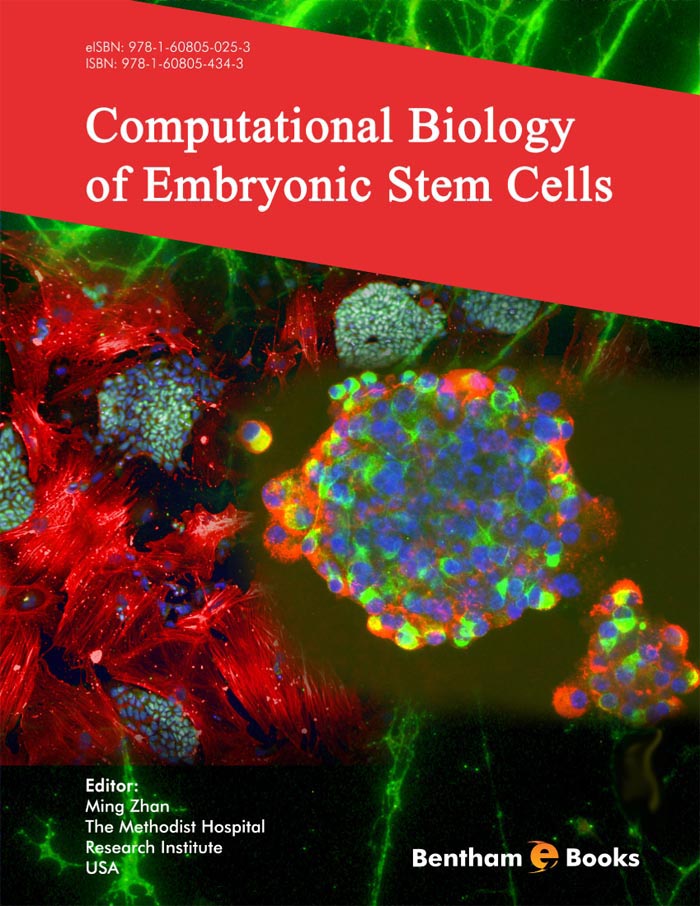Preface
Embryonic stem (ES) cells hold a great promise for regenerative medicine and treatment of illness such as neurodegenerative diseases, spinal cord injury, diabetes, and heart disease. In recent years, computational biologyhas significantly changed the landscape of the ES cell research, resulting in many significant discoveries. This book brings together reviews and reports from leading scientists to provide a comprehensive and updated introduction to the field of computational biology of ES cells.
The topics of this book is diverse, ranging from pure to applied computational biology research, and from integrated to systems biology studies on ES cells. We first introduce various bioinformatics algorithms and computational methodologies used for stem cell research. Banerjee et al. describe a method for reconstructing gene regulatory networks governing ES cell differentiation based ondiscrete temporal gene expression data.The method is formulated using an inherent feature of biological network, the sparsity of interconnection between transcription factors. Liu et al. review algorithms for structure learning of Bayesian networks and elucidating causal knowledge. The chapter answers the question about to what extent and by which means we can extract valuable biological knowledge from various experiment data. Newman et al. present AutoSOME, a novel unsupervised method for automatic clustering of large, high-dimensional data without prior knowledge of cluster number or structure. By applying this novel method on stem cell microarray data, the authors illustrate how to identify gene co-expression modules along with clusters of cellular phenotypes in a single step, and how to visualize transcriptome variation among stem cells using an intuitive network display. Inintroducing mathematical modeling studies on ES cells, Plopperet al. describe a multi-scale and multi-dimensional modeling of stem cells. The integrative modeling highlights how data gathered from one level can benefit research across multiple scales, addressing the challenge in analyzing increased amount of information of stem cells, which spans the entire breadth of biological fields, from molecular biology to population biology.
We next present focused computational analyses of the genome, transcriptome, proteome, epigenome and regulatory network of ES cells, and database for stem cell research. Chavez provides an overview of experimental techniques and computational methods for genome-wide methylation analysis, with focus on human ES cells. Sun & Zhan demonstratetranscriptional co-expression profiling of ES cells at global, pathway, and chromosome levels for exploring molecular mechanisms guiding ESC self-renewal and differentiation.Jiet al. describe computational analysis of alternative polyadenylation in ES cells and induced pluripotent stem (iPS) cells. The computational method describedallows examining regulation of 3’UTR by alternative polyadenylationusing DNA microarray data, and post-transcriptional regulation through cis-elements in 3’UTRs. Huelga & Yeo describegenome-wide detection of alternative splicing and highlight the importance of cis- and trans-factors in regulating alternative splicing in stem cells. Gunaratne & Tennakoon illustrate a microRNA-pluripotency gene network in ES Cells, and review the latest experimental technologies and computational algorithms forrevealing genomic and epigenetic changes associated with self-renewal and differentiation of ES cells. Lee et al.presentan integrated analysis of transcriptome and translation states for genome-wide identification of translationally regulated genes in ES cells. Sandie et al. demonstrate computational identification of non-coding antisense transcripts implicated in stem cell differentiation based on SAGE data and gene expression data. Han & Feng review the state-of-the-art ChIP-seq analysis tools developed for predicting ChIP-enriched genomic sites, and present a computational analysis of ChIP-seq data in ES cells. Finally, Hatzopoulos introduces the “Functional Genomics in Embryonic Stem Cells” (FunGenES) database. The database allows searching for gene expression and co-expression profiling data of mouse ES cells, as well as functional information of the relevant genes in embryonic development, adult homeostasis and disease.
The contributing authors of the book not only describe their researches and review the latestdevelopment of the field, but also discussthe future perspectives of the research. The book is a valuable reference and handbook for researchers and clinicians conducting stem cell research, and students and medical professionals interested in regenerative medicine, developmental biology, bioinformatics and computational biology.
Ming Zhan, Ph.D.
Associate Professor, Cornell University Weiss Medical College
Chief of Bioinformatics, The Methodist Hospital Research Institute

